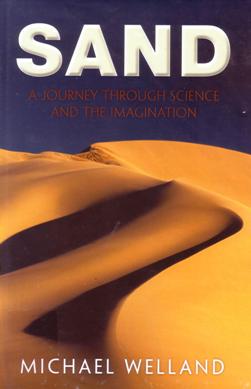
This enchanting and entertaining book has a rather poetic style, but is let down by poor figures and plates and an irritating habit of mixing metric and imperial units. It does, however, boast excellent quality printing and binding, and is suitable for all those interested in geology, from amateur to professor.
It introduces the reader to the world of the arenophile (people who love and even collect sand), and covers everything from single grains to granular materials in bulk. It does not deal much with hard science but requires some knowledge of American geography, history and literature to make the most of some sections.
The book features some regulars: the Permian mass extinction, the Chicxulub meteorite impact, the break-up of Pangaea, the formation of the moon and uniformitarianism. These are enlivened by the beautiful style of their presentation. Beyond this the text touches on the simple mathematics of dealing with and understanding sediment data and with the theory of very small and very large numbers. This leads on to a discussion of how long is geological time. There is a brief diversion into geomorphology (e.g. meandering and river evolution), before a more detailed account of the formation of sandstone. There is also an interesting discussion on how quicksand works and a section on forensic geology.
The book is distinctive in exploring various aspects of religion and culture and the role that sand has played in them. It also looks at modern artists and their interaction with sand before reviewing, more conventionally, uses of sand in the modern world - from glass to pharmaceuticals and paper manufacture. Interesting, sand-related anecdotes litter the text. I particularly liked the tale of the Oogaroo (a vampire) in the Caribbean that can, apparently, be distracted by putting a pile of sand outside your front door. The Oogaroo is an obsessive counter and has to count the grains of sand. Moreover, you should mix in some talons of the Ground Owl (
Athene cunicularia Molina 1782), because on finding them the vampire will be so distressed that it will lose count and start again. This will all take so long, that the Oogaroo will no longer pose a threat.
All in all this is an outstanding book that makes, as its title suggests, for a leisurely yet stimulating read.
Reviewed by: Steve Rowlatt, Bishop’s Stortford
SAND: A JOURNEY THROUGH SCIENCE AND THE IMAGINATION
MICHAEL WELLAND Published by: Oxford University Press 2009
ISBN: 978-0-19-958818-3 (pbk)
List price: £9.99 333pp www.oup.com